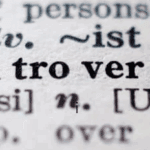
Burning Fat: What It Really Means and How Your Body Releases It

We all hear the term “burning fat” thrown around a lot, especially in fitness circles. But what exactly does it mean? Is fat literally going up in flames inside our bodies? (Spoiler alert: no!) Let’s delve deeper into the science behind fat burning and how your body eliminates it after you’ve used it for energy.
From Stored Reserves to Cellular Power:
Fat, in the form of triglycerides, is stored in specialized cells throughout your body called adipocytes. These act like little energy banks, accumulating fat when you consume more calories than you burn. When your body needs energy – during exercise, for example – it taps into these reserves.
The Breakdown Begins: Lipolysis
The process of mobilizing stored fat is called lipolysis. Here’s the breakdown (pun intended):
- Hormonal Signals: Hormones like glucagon and adrenaline, released during exercise or periods of low blood sugar, trigger lipolysis.
- Breaking Down Triglycerides: Enzymes within adipocytes break down triglycerides into individual fatty acids and glycerol.
- Fatty Acids on the Move: Fatty acids are released into the bloodstream, ready to be transported to your body’s energy centers – the cells!
The Powerhouse: Burning Fat for Energy
Once fatty acids enter your cells, they head to the mitochondria, often referred to as the “powerhouses” of the cell. Here, through a series of complex reactions (the Krebs cycle and oxidative phosphorylation), fatty acids are broken down and turned into energy (ATP) that fuels your muscles and other bodily functions.
Bye-Bye Fat Byproducts:
The process of burning fat doesn’t disappear these molecules entirely. The breakdown of fatty acids produces byproducts – water and carbon dioxide.
- Water: This is released through sweat, urine, and even your breath.
- Carbon Dioxide: This waste product is expelled through exhalation, a key reason why you breathe harder during exercise. In fact, research suggests that the majority (around 84%) of fat you “burn” is eliminated as carbon dioxide!
So, When You Say “Burning Fat,” What Happens?
In essence, “burning fat” refers to the mobilization of stored fat from your adipocytes, its breakdown into usable energy, and the release of waste products like water and carbon dioxide. It’s not about literal flames, but rather a complex metabolic process that keeps you energized.
Remember: Exercise is a great way to promote lipolysis and burn fat for energy. However, a healthy diet and lifestyle are crucial for overall weight management.
Hello, I am Aman (: Full Time Traveler :) At the age of 41, in April 2023, fueled by my love for travel and the determination not to remain fixed like a tree, I embarked on a bold journey. Having dedicated 17 years to a corporate job, I chose to transition from a full-time employee to a full-time traveler, driven by the desire to break free from the routine and constraints of a conventional life. Along the way, I not only explored the wonders of travel but also uncovered the transformative power of financial freedom. I realized how it could liberate me to lead a life teeming with adventure, purpose, and fulfillment. Through my blogs, I am passionately sharing my story, aiming to inspire and provide valuable guidance to those, like me, who aspire to weave travel into a life overflowing with limitless possibilities.





















Post Comment
You must be logged in to post a comment.